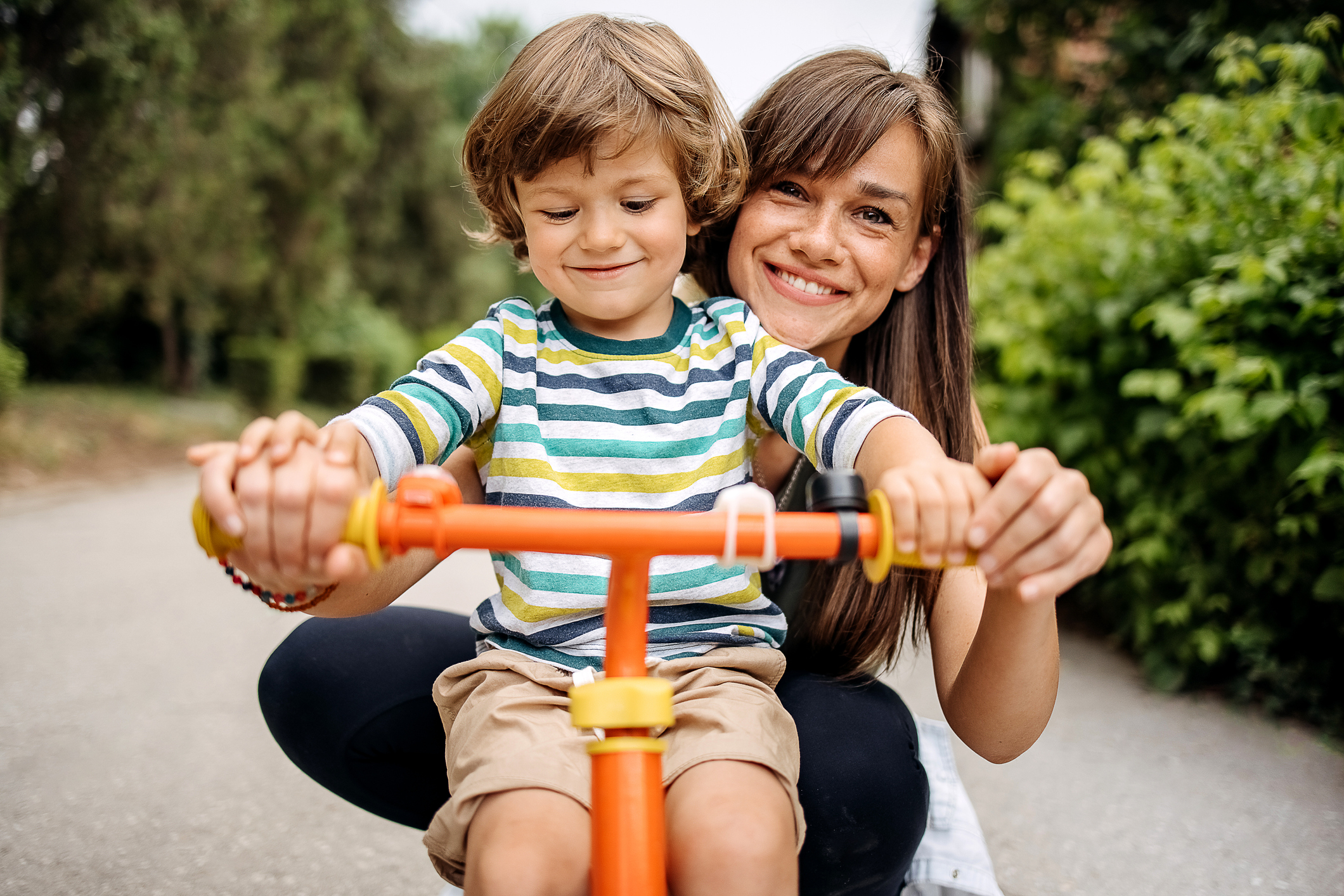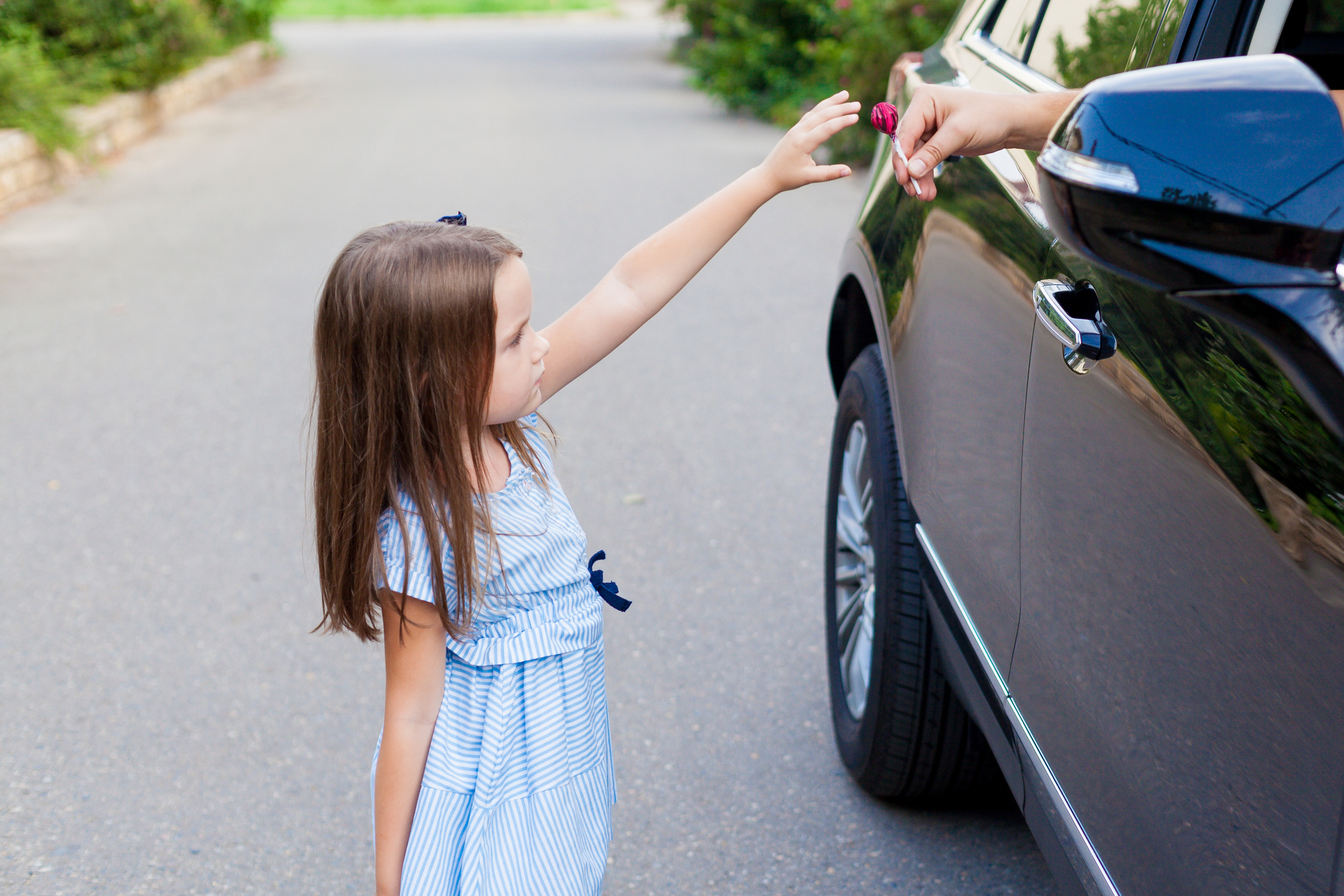“What are you afraid of?” my husband asked as I kept a wary eye on our daughter. We’d walked to the playground, and almost immediately, my 6-year-old had made a new friend. And they hadn’t stopped moving. The girls had just climbed up the bumpy slide, run across the wiggly bridge, and then flew (almost fell) down the fireman’s pole. “I’ve never seen her so…wild,” I said. The muscles in my shoulders felt stiff and tense, and, yes, I was worried our daughter could get hurt. “Aw, they’re just having fun,” my husband said and took a sip of his coffee.
We think safety for kids is a result of keeping a watchful eye. That might make us feel better, but it won’t guarantee they’ll never get hurt. It turns out there are 3 better ways to keep your child safe.
1. Give your child experiences.
Have you ever taken a bike ride with your child and he’s zoomed ahead of you? And when he turns a corner and is out of sight for a moment, your heart rate quickens? But then you catch up and find him there, feet planted, waiting for you. I think sometimes we underestimate our kids’ abilities just because they’re little. But by getting them out into the world, they show us (and themselves) that they’re far more capable than we think they are.
We want to keep our kids safe, but bubble-wrapping them will have the opposite effect. They won’t know what to do and how to act once they’re set free. So, from their earliest days, we need to expose our children to many different things. It’s OK if they fall down or can’t spot you right away on the playground (you’re not far). They’ll learn though experience—how to pick themselves up, where to look, and what to do next time. William Stixrud, PhD, and Ned Johnson, authors of The Self-Driven Child, say, “Experience is typically a better teacher than words. What’s more, they’ll pay attention next time” if things don’t go well the first time.
Teaching safety for kids: Let your child play at a friend’s house without you. When she asks for rollerblades for her birthday, don’t let your fear hold you back from buying the gift.
2. Teach her good judgment.
One afternoon, at the library, the woman at the checkout counter smiled and pushed a tray of mini cupcakes toward us. “We’re celebrating National Read Across America Week. Have a cupcake!” My 8-year-old food-allergic daughter looked up at her and asked, “Are they safe?” The woman, a bit perplexed, said yes, they’re safe to eat. I was so proud of my daughter for asking, but I quickly realized I needed to teach her to be more specific—so that she would be safe when I wasn’t around.
Our kids learn by doing things for themselves. And Stixrud and Johnson tell us, “Learning how to recognize and manage risk is part of growing up.” Remind your kids that you’re not always going to be watching. If they know that, they’ll learn to be more responsible for themselves.
Our kids learn by doing things for themselves. Click To TweetTeaching safety for kids: Let your child check out books with your library card. Have her order for herself at restaurants. If a problem comes up at school, encourage your child to talk to the teacher first before stepping in.
3. Let him climb a tree (and take other risks).
Donovan, a sturdy little kid in my son’s kindergarten class, slipped and fell off the monkey bars. I remember gawking at the huge cast and thinking, “Oh my gosh. How did a 5-year-old get on the monkey bars?” I also remember thinking, “Now he’s gonna miss karate practice for the next six weeks. I’m definitely keeping my son off those monkey bars.” I wanted to keep my child safe. I had no idea that falling at five would be so much easier than falling at 15.
Stixrud and Johnson advise us to “Let [our kids] climb that tree and fall when they’re six—it will teach them important skills about risk and about being in their bodies. Even if they break their arm and are in a cast, they will benefit from knowing that they have experienced and survived a scary incident and are stronger for it.” The authors go on to point out that research says kids who fall from heights and get hurt are less likely to be afraid of heights when they’re grown up. I had no idea!
Kids will learn through the ups and downs of taking risks. Try not to let your fear rob them of healthy risk-taking.
How has the safety for kids in your family affected your parenting?










